Israel unleashes ‘bunker buster’ bombs to destroy Hamas tunnel network in Gaza: Israeli Prime Minister Benjamin Netanyahu vows to ‘completely eliminate’ the evil terror group and ‘bring back’ hostages
It was the culmination of three weeks of Israeli rockets raining relentlessly on Gaza, and as darkness approached, the intensity of the attack increased exponentially.
In addition to airstrikes along the length of the Strip, one of the most densely populated areas on Earth, artillery shelling and tank shells blasted through the gathering darkness, each bringing its own wave of destruction.
“We have moved into the next phase of the war,” Defense Secretary Yoav Gallant said as dawn broke and hundreds of destroyed buildings became visible.
‘Last night the ground in Gaza shook. We attacked above ground and underground. The campaign will continue until further notice.’
At a press conference last night, Prime Minister Benjamin Netanyahu said Israel was waging its “second war of independence” and that it would be a “long war.”
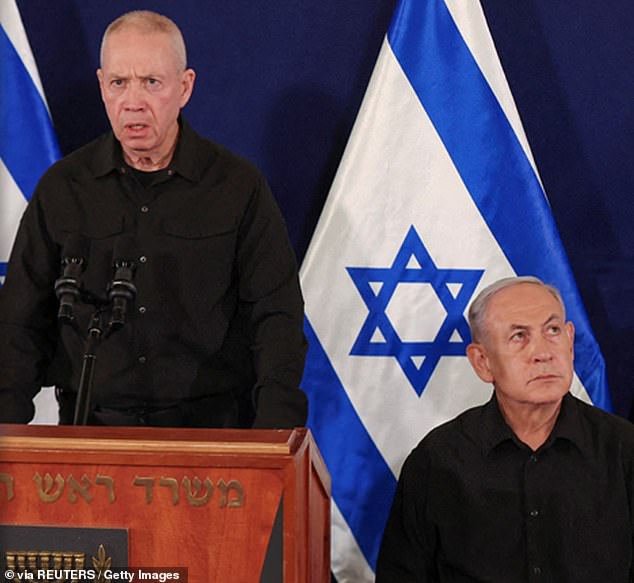
Prime Minister Benjamin Netanyahu (pictured, right) said Israel was fighting its ‘second war of independence’ and that it would be a ‘long war’
He added: “We will fight and we will not surrender. We will not retreat. It will be a victory of good over evil as we fight for our lives.” He said the army had entered “the stronghold of evil,” adding: “This is the second phase of the war, which has clear objectives to destroy Hamas and bring our hostages home.”
He said his “heart breaks” for the families of the 229 hostages in Gaza, adding: “I promise we will do our utmost to bring them back.”
In the ‘next phase’, fighter jets attacked targets in northern Gaza on Friday evening, including the outskirts of Gaza City. There were also attacks around Al-Shifa hospital, which Israel claims conceals a Hamas command and control center, making it a military target.
According to some reports, the Israeli Air Force deployed “bunker buster” munitions to destroy Hamas’ tunnel network. The rockets’ first warhead creates a hole, after which a second one penetrates deeper into the Earth and destroys underground structures.
At least 100 fighter-bombers attacked approximately 150 underground targets. Israeli army spokesman Daniel Hagari again warned civilians in northern Gaza to evacuate without delay. A power, internet and mobile phone outage was the main signal that the ground invasion had begun.
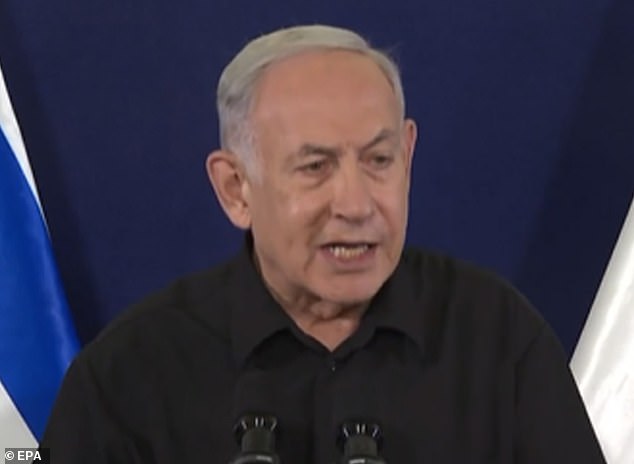
Israeli Prime Minister Benjamin Netanyahu vowed on Saturday evening to ‘completely eliminate’ Hamas
Then, in the dark but under a nearly full moon, around 8 p.m., the column of tanks waiting near the Israeli town of Sderot began creeping forward and then picking up speed as they staggered toward the same fence where the Hamas death squads broke through on October 7.
They were accompanied by vehicles carrying troops who would remain in Gaza rather than withdraw before dawn as they had done on Wednesday and Thursday.
At the same time, Israeli special forces attacked the port of Gaza City. Hamas defiantly fired salvo after salvo of rockets into Israel.
The minaret of a mosque was close enough to the launch site to be illuminated by the rockets – confirmation, if need be, that Hamas will use any building as cover.
An Israeli military source outlined their risky strategy to The Mail on Sunday, saying: ‘Our ground operation is not a large-scale invasion. It is ‘modular’, meaning we can enter an area, then withdraw and return with larger forces if necessary.
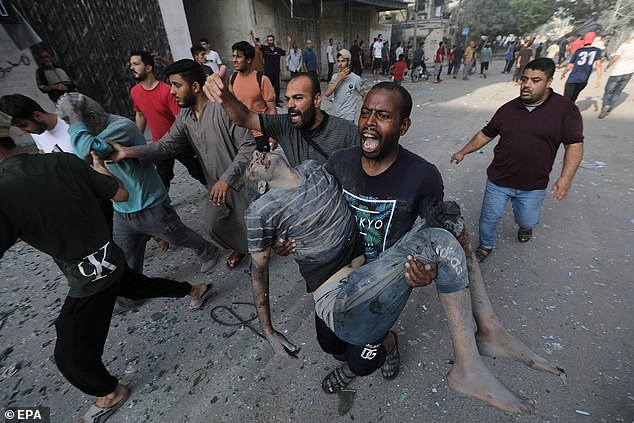
A Palestinian carries a wounded man after an Israeli airstrike on northern Gaza
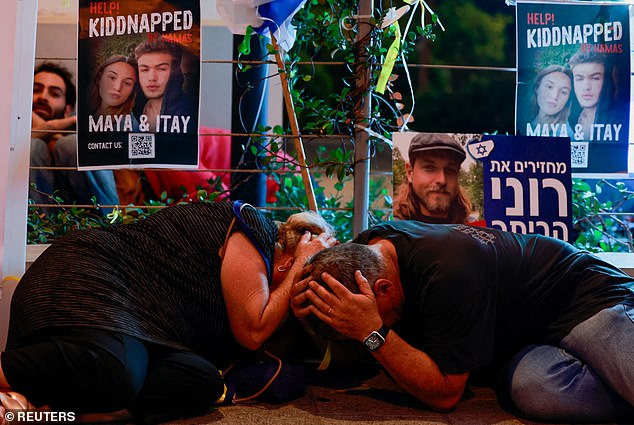
People run for cover as the sirens of incoming rockets sound, amid the ongoing conflict between Israel and the Palestinians
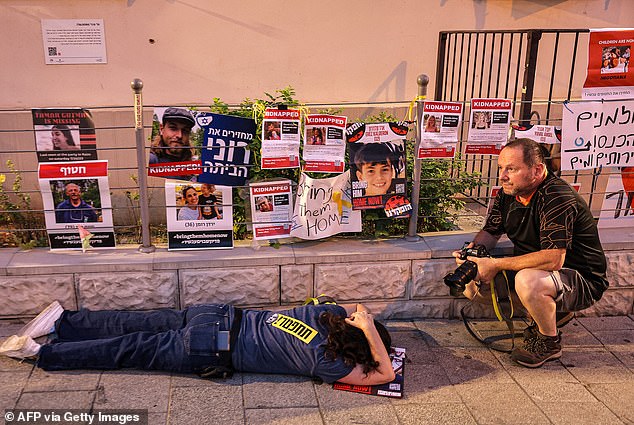
Moments after Netanyahu addressed the nation, terrified Israelis in Tel Aviv were seen running for cover as rocket sirens sounded through the city.
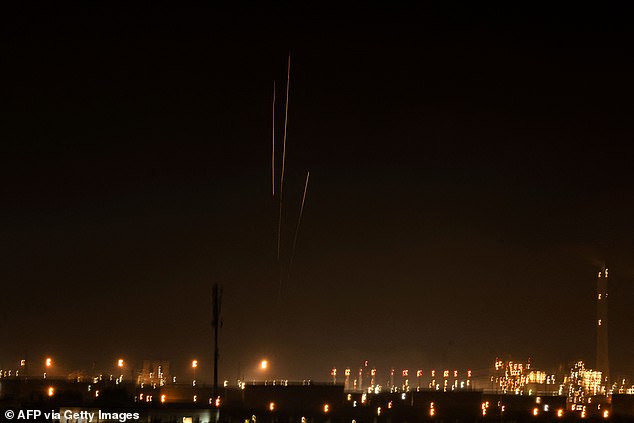
A photo taken from the southern city of Ashkelon in Israel shows rockets fired from the Gaza Strip on October 28
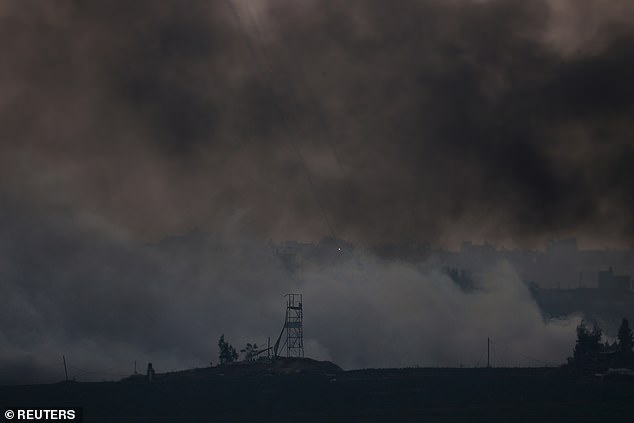
Smoke rises over Gaza, seen from the Israeli border with Gaza on Saturday

Fire and smoke rise after an Israeli airstrike in the Gaza Strip, seen from southern Israel
“The modular method creates pressure on the Hamas leadership and the idea is to cause more and more suffering for whoever is holding the hostages and ensure that Hamas and Islamic Jihad reduce the manipulation and psychological warfare they have carried out.”
The source acknowledged that there was a risk to the hostages from a ground invasion. “Some argue that the lives of the hostages should not be endangered and that negotiations should therefore continue.”
Families of the hostages met Netanyahu last night to express their concerns that they will be killed in the attacks. On Friday, it was clear that Israel’s cabinet agreed that the hostage “negotiations” mediated by Qatar were merely a time-game by Hamas.
The source added: “A second school of thought believes that without the added pressure caused by a ground attack on Gaza, Hamas will never release the Israeli hostages, including the children, women and elderly, who are in fact the only political and effective card in his hands.’
At dawn yesterday the bombardment continued, but this time interrupted by a new sound – of heavy machine gun and small arms fire, as the sides were locked in closer combat than before and the war entered a new and equally bloody chapter.
